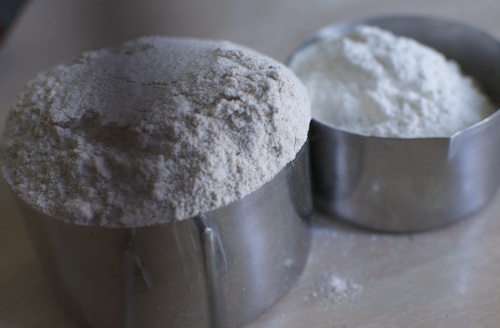Hi Herbies :] We get a lot of questions about flours for baking, so HH and I decided to do a series on the different types of flours and what they're used for. We'll cover as much ground as we can; but if you have a specific question, leave it in the comments and I'll be sure to research into it!
Today we're going to start with the basics...white flour and wheat flour.

The flours are different in texture, taste, and moisture content.Some flours are 'thirstier' than others, meaning they will soak up your liquid faster and if you don't add enough, you won't get the result you're looking for in your baked goods. White flour is the ground inner kernel of two types of wheat: high-gluten hard wheat and low-gluten soft wheat.
There are two types of whole wheat flours; the type labeled "whole-wheat" is usually ground hard wheat and is great for baking bread because it is high in gluten. Whole-wheat "pastry flour" is made from a soft wheat low in gluten and is best for cakes, muffins, biscuits, scones, pastries, and cookies. Pastry flours have lower protein levels which make them light.

Whole-wheat flour has fewer calories and carbohydrates than white flour, and it contains five times the fiber, twice the calcium, and 25 percent more protein than white flour.
Most sources say you can successfully substitute up to half of the whole-wheat flour called for in a recipe with all-purpose white flour. If you do this, you may have to alter the amount of liquid used in the recipe to eye, you want to make sure you're not making something too wet or too dry.
Side note: HH uses whole-wheat pastry or white whole wheat flour in any recipe -- and never uses all purpose.













